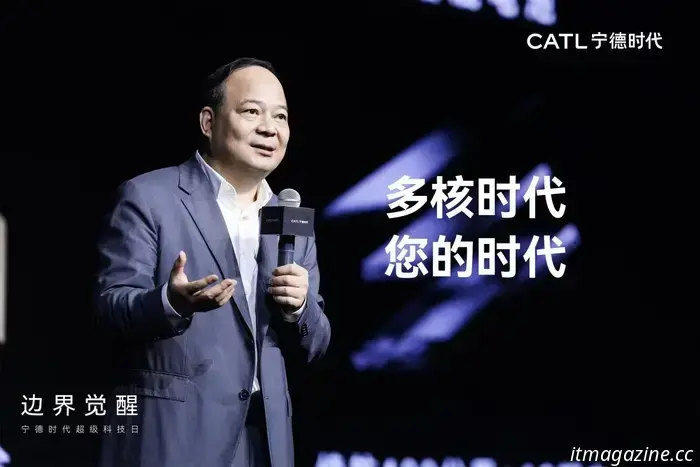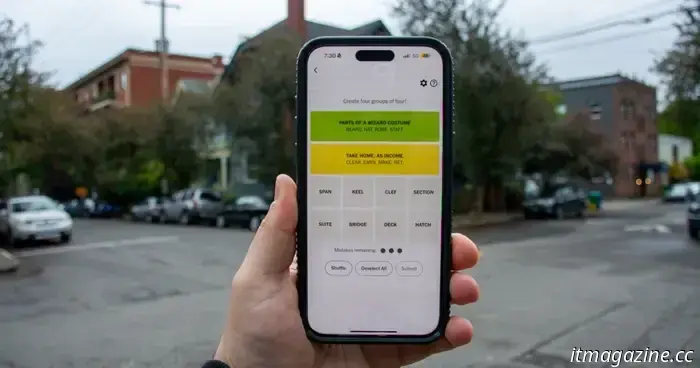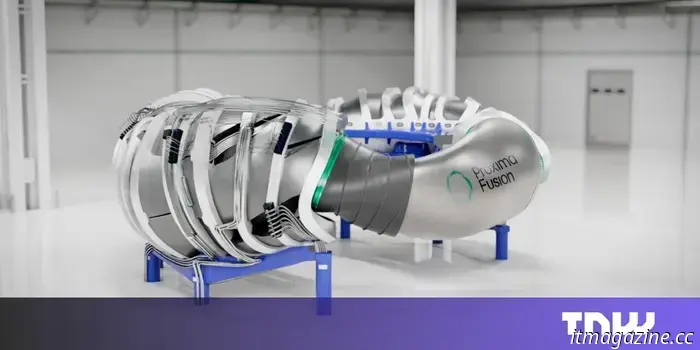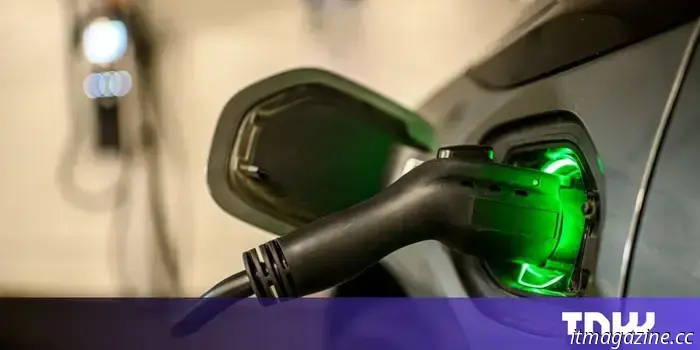
CATL claims that its next-generation dual-power electric vehicle battery will provide a range of 930 miles.
Robin Zeng, founder, chairman, and CEO of Contemporary Amperex Technology Co., Limited (CATL), addressed an event in Shanghai on April 21, 2025. Credit: CATL
On Monday, Chinese battery manufacturer CATL revealed new information regarding its next-generation batteries. The company's "dual-power" nickel and cobalt-based battery has the potential to usher in a new era of electric vehicles capable of traveling over 1,500 kilometers (932 miles) while greatly minimizing the risk of thermal runaway.
Importance: CATL’s “dual-power” design features two independent “energy zones” within a single battery pack— a main zone and an emergency zone—allowing both to function concurrently to ensure power supply for the vehicle during critical moments, such as car fires. This design also permits battery units with varying chemical systems to work together and enhance each other's capabilities, providing customers with improved overall functionality compared to traditional batteries, as stated by founder and chairman Robin Zeng in a press event.
Details: The company mentioned a premium version of the dual-power battery, which would include two lithium-ion units with nickel-manganese-cobalt (NMC) cathodes that can store more energy than less expensive materials like iron and sodium, potentially achieving a capacity of 180 kilowatt-hours (kWh). This capacity would enable an all-electric sedan with a three-meter wheelbase to offer a driving range of 1,500 km per charge. For reference, a standard-range, China-made Tesla Model 3 has a rated range of 606 km, supported by a 66 kWh battery from CATL utilizing more cost-effective lithium-phosphate-iron (LFP) cathode materials.
Zeng highlighted that CATL’s advancements in sodium-ion batteries also support the innovation of its “dual-power” design. A battery pack of 75 kWh containing an LFP unit and a sodium-ion unit could provide a 700 km driving range while maintaining good performance in low temperatures.
In December, CATL is set to launch mass production of a new sodium-ion battery featuring the highest energy density in its category at 175 watt-hours per kilogram (Wh/kg), also capable of performing well in extreme cold. Existing lithium-ion batteries tend to suffer reduced range and power in cold weather.
The sodium-ion batteries, branded as Naxtra, promise an all-electric vehicle a 500 km range. This development occurred three years after CATL introduced its first-generation sodium-ion battery amidst rising demand for precious battery materials like cobalt, according to Reuters.
Context: CATL is the world’s leading battery manufacturer by shipments and has expanded its product range to include Qilin, Shenxing, and Freevoy, alongside Naxtra. The Qilin and Shenxing batteries are recognized for their high energy density and rapid charging features, respectively, while Freevoy hybrid batteries cater to the increasing demand from plug-in hybrid and extended-range hybrid electric vehicle producers.
On Monday, the company also announced that its second-generation Shenxing battery now offers a 12C charge rate, capable of achieving a maximum charging speed of 1,300 kilowatts (kW), or 1.3 megawatts (MW), providing 520 km of range in just five minutes. Competitors BYD and Huawei demonstrated similar technologies the previous month.
Jill Shen is a technology reporter based in Shanghai, focusing on Chinese mobility, autonomous vehicles, and electric cars. You can connect with her via email at [email protected] or on Twitter at @jill_shen_sh.

Other articles
 Creepy Redneck Dinosaur Mansion 3 is actually much more serious than it may seem, I assure you.
Creepy Redneck Dinosaur Mansion 3 might seem like a joke, but it actually offers a surprisingly deep commentary on the challenges of game development.
Creepy Redneck Dinosaur Mansion 3 is actually much more serious than it may seem, I assure you.
Creepy Redneck Dinosaur Mansion 3 might seem like a joke, but it actually offers a surprisingly deep commentary on the challenges of game development.
 NYT Connections: clues and solutions for Tuesday, April 22.
Connections is the latest puzzle game from the New York Times, and it can be pretty challenging. If you require assistance in solving today's puzzle, we're here to support you.
NYT Connections: clues and solutions for Tuesday, April 22.
Connections is the latest puzzle game from the New York Times, and it can be pretty challenging. If you require assistance in solving today's puzzle, we're here to support you.
 Fusion energy might be 'crucial' for the energy security of Europe.
The CEO of Proxima Fusion stated that fusion energy has the potential to lessen Europe's reliance on foreign nations like the US, China, and Russia.
Fusion energy might be 'crucial' for the energy security of Europe.
The CEO of Proxima Fusion stated that fusion energy has the potential to lessen Europe's reliance on foreign nations like the US, China, and Russia.
 NYT Strands for today: clues, spangram, and solutions for Tuesday, April 22.
Strands offers a challenging twist on the traditional word search from NYT Games. If you're having difficulty and can't figure out today's puzzle, we've got assistance and clues for you right here.
NYT Strands for today: clues, spangram, and solutions for Tuesday, April 22.
Strands offers a challenging twist on the traditional word search from NYT Games. If you're having difficulty and can't figure out today's puzzle, we've got assistance and clues for you right here.
 'Electrotech' has the potential to end Europe's dependence on fossil fuel imports.
Ember discovered that these three technologies could significantly reduce Europe's reliance on fossil fuel imports from nations such as the US and Russia.
'Electrotech' has the potential to end Europe's dependence on fossil fuel imports.
Ember discovered that these three technologies could significantly reduce Europe's reliance on fossil fuel imports from nations such as the US and Russia.
 Marvel Rivals Season 2 Battle Pass: how to obtain and unlock all items
Marvel Rivals Season 2 features an impressive Battle Pass packed with Hellfire Gala themed outfits and additional items.
Marvel Rivals Season 2 Battle Pass: how to obtain and unlock all items
Marvel Rivals Season 2 features an impressive Battle Pass packed with Hellfire Gala themed outfits and additional items.
CATL claims that its next-generation dual-power electric vehicle battery will provide a range of 930 miles.
At a press event in Shanghai, founder and chairman Robin Zeng informed reporters that dual-power batteries could offer customers more comprehensive capabilities compared to traditional batteries.
